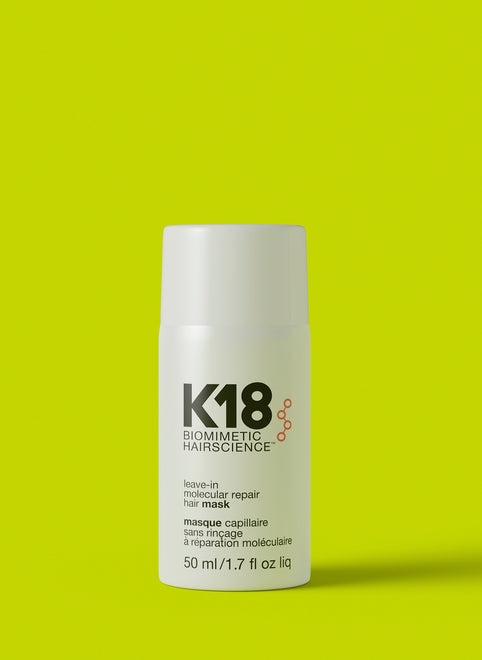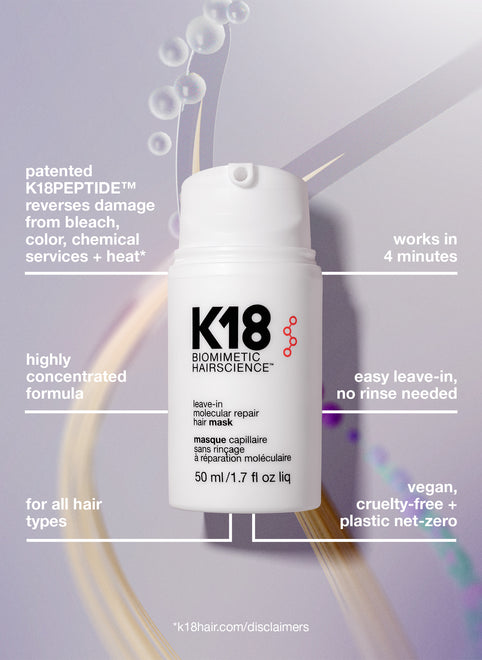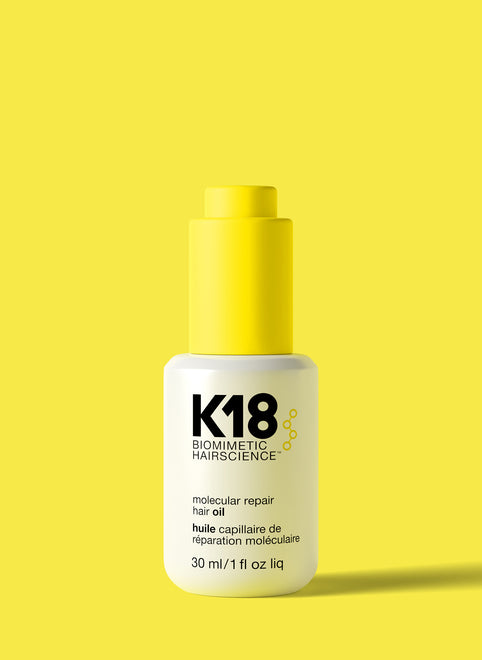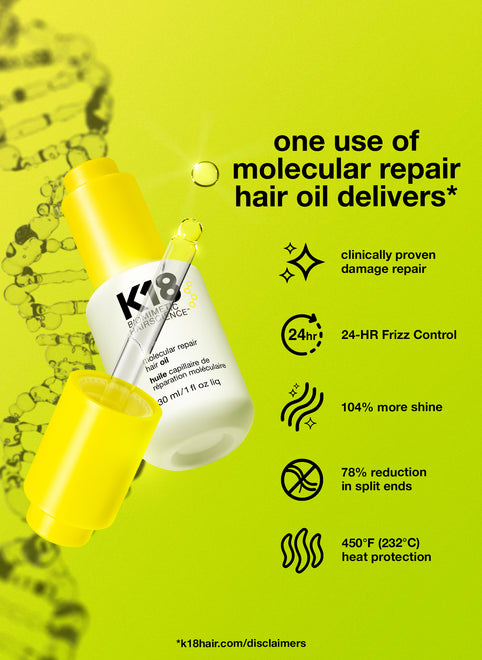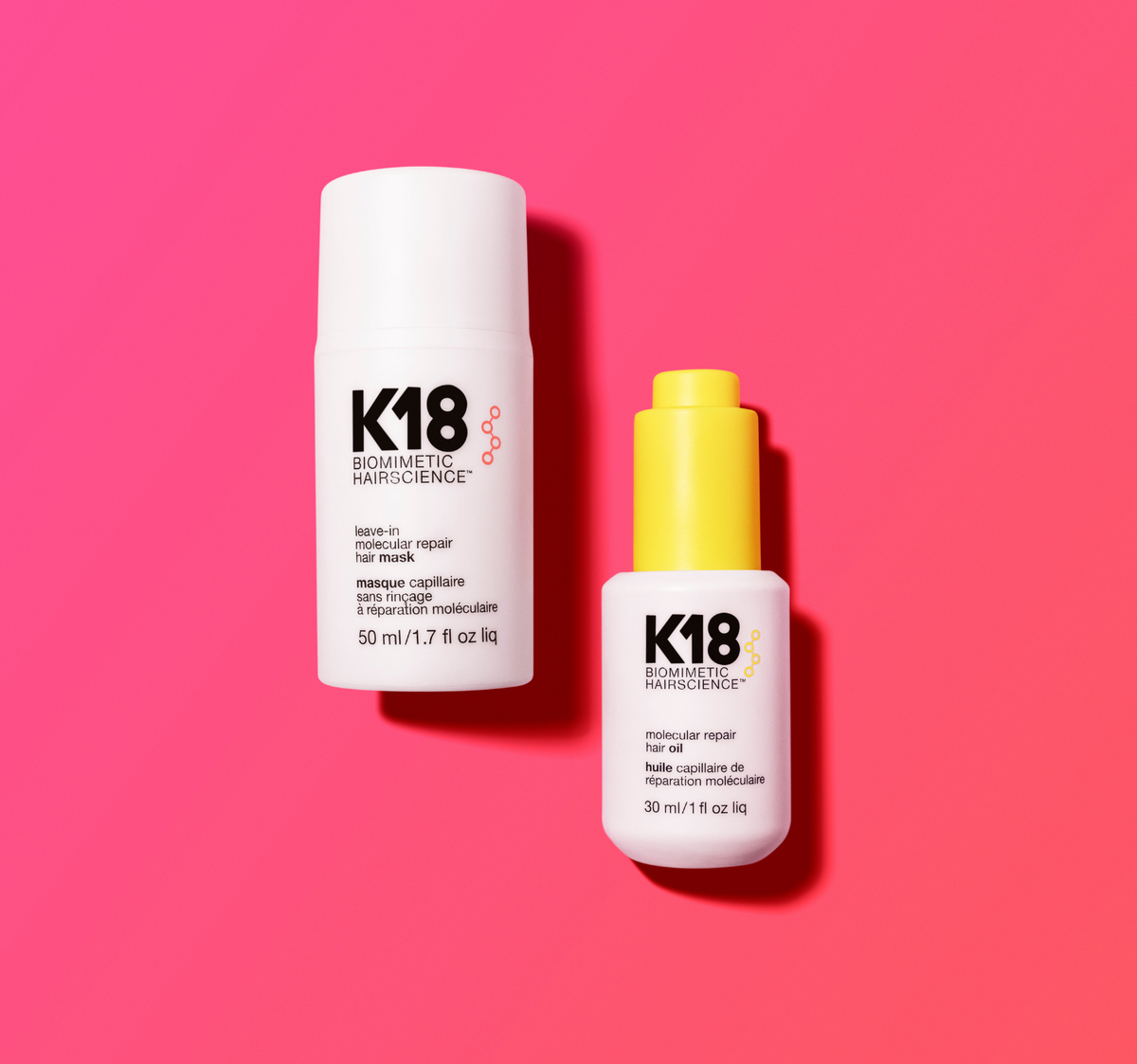Hair evolves with age. This is how to support your strands throughout the years.
From reduced flexibility to fine lines, the natural process of aging impacts all parts of the body—even hair. With time, you might find that your hair starts to gray and become brittle and dull, a stark contrast to the stronger, fuller hair of your youth.
But why exactly does this happen and what can you do about it?
what happens to hair as you age
It all comes down to the loss of melanin, a direct result of oxidative stress brought on by the naturally occurring oxidative reactions involved in its production.
"As we get older, our hair tends to lose its color and turn gray or white because the pigment-producing cells known as melanocytes slow down,” says Amber Thorne, K18’s Director of Education Design + Development.
These melanocytes cells are found inside the hair follicles that are in charge of creating melanin–aka your hair color. As you age, melanin production gradually subsides, which is what leads to gray hair, explains Thorne, adding that while gray hair has “scattered bits of pigment left,” white hair signals a complete halt of melanin.
In addition to giving hair its pigment, melanin also provides protection from the sun’s harmful UV rays. So, when melanin production is compromised, the hair becomes more prone to damage in the form of breakage and thinning. This means that aside from graying, hair becomes drier, thinner, weaker, and grows slower with age. This is also due to the reduced oil production, a byproduct of aging hair, says Thorne. “Some people even notice their hair feels coarse or wirier over time,” she adds.
the power of molecular repair for aging hair
Fortunately, there are ways to support aging hair while still celebrating the privilege of getting older. To begin, consider booking an in-salon K18REPAIR™ service by a certified PRO to strengthen and revive your strands, “and bring back some of that softness and shine that can fade with age,” recommends Thorne.
Next, dial up your at-home routine. K18 offers two molecular repair products, both of which are formulated to repair damaged hair from the inside out–at the molecular level where all hair is the same–rather than providing a superficial quick fix. Molecular repair mask is a leave-in treatment designed for weekly use (starting with the first 4-6 washes post-salon service, then as needed) that reverses hair damage in just 4 minutes.* For daily mantainence and heat protection, the molecular repair hair oil, delivers 78% reduction in split ends, 24-hour frizz control, and 104% more shine after one use.*
“As your hair changes over time, it’s important to regularly reassess your haircare routine, from cleansing and conditioning to treatments and styling,” says Thorne. “Adapting your approach to meet your hair's current needs—and its ongoing changes—is key to maintaining its health. After all, when your hair looks its best, you feel your best, and that’s what truly matters.”


.png?v=1706135901220&transform=resize=150x150)
